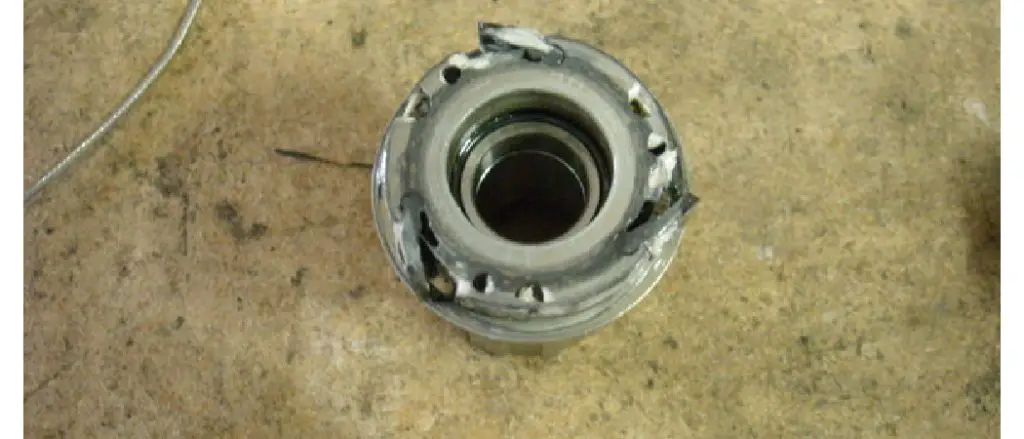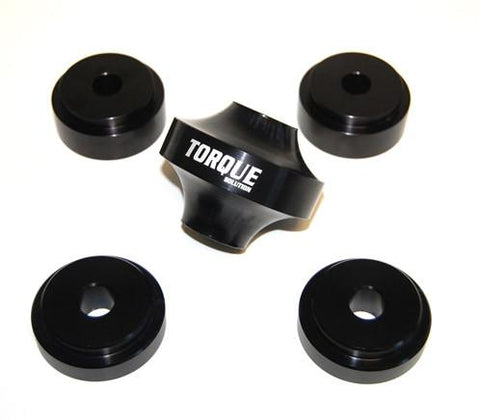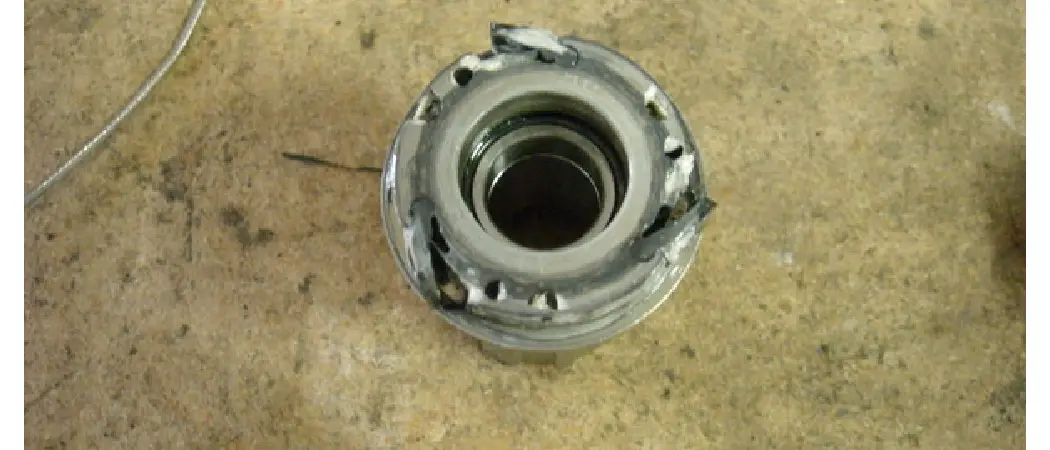To quiet rear differential noise, try checking the fluid level and condition first. If that doesn’t help, consider replacing worn gears.
Rear differential noise can be a frustrating problem for vehicle owners, causing irritation and potential safety concerns. Luckily, there are simple steps you can take to address this issue and restore peace and quiet to your driving experience. By following some basic maintenance procedures and potentially replacing worn components, you can effectively reduce or eliminate the unwanted noise coming from your rear differential.
We will explore some practical solutions to help you address rear differential noise efficiently and get back to enjoying a smooth and quiet ride.

Common Causes Of Rear Differential Noise
Rear differential noise commonly arises from worn bearings, gear misalignment, or inadequate lubrication. To quiet the noise, regular maintenance, including checking and replacing lubricants, tightening bolts, and correcting alignments, is crucial. Ignoring these issues can lead to costly repairs in the long run.
Worn Or Damaged Bearings
One of the most common causes of rear differential noise is worn or damaged bearings. The differential assembly contains several bearings that allow the various components to rotate smoothly. Over time, these bearings can become worn or damaged due to regular wear and tear, lack of maintenance, or extreme driving conditions.
When the bearings are worn or damaged, they can produce a variety of noises such as humming, whining, or grinding sounds. These noises may become louder or more noticeable, especially when you are driving at higher speeds or making tight turns.
If you suspect that the noise is coming from the bearings, it is crucial to address the issue promptly. Ignoring worn or damaged bearings can lead to further damage to the differential assembly, which can result in more expensive repairs.
Insufficient Lubrication
Insufficient lubrication is another common cause of rear differential noise. The differential assembly relies on lubrication to reduce friction and heat between the gears, bearings, and other components. Without proper lubrication, these metal components can rub against each other, causing noise and damage.
There can be several reasons for insufficient lubrication in the differential. Over time, the lubricating oil can break down or become contaminated, reducing its effectiveness. In some cases, there may be a leak in the differential housing, leading to a loss of lubricant. Additionally, incorrect or inadequate oil levels can also contribute to this problem.
If the noise is caused by insufficient lubrication, it is crucial to address the issue as soon as possible. Regular maintenance, including checking and changing the differential oil at recommended intervals, can help prevent this problem.
Misaligned Gears
Misaligned gears can also be a common cause of rear differential noise. The differential gears, including the ring gear and pinion gear, need to be properly aligned for smooth operation. If these gears become misaligned, they can produce loud clunking or banging noises.
Misalignment can occur due to various reasons. It could be a result of improper reassembly after a repair or maintenance work, damaged gear teeth, worn or loose fasteners, or even excessive wear on the differential housing.
If you suspect misaligned gears as the cause of the noise, it is essential to have a professional inspect and realign the gears to prevent further damage and ensure proper functioning of the rear differential.

Credit: www.maperformance.com
Diagnosing Rear Differential Noise
Diagnosing Rear Differential Noise is crucial to identify potential issues and address them promptly. Listening to the Noise, Checking for Leaks, and Inspecting for Wear are essential steps to determine the source of the noise accurately.
Listening To The Noise
One of the primary methods to diagnose rear differential noise is by listening carefully for any unusual sounds while driving. Strange whining or grinding noises could indicate problems within the differential.
Checking For Leaks
Inspect the rear differential for any signs of leaks or fluid seepage, which can point to potential issues with seals or gaskets. Leaking fluid is a clear indicator of a problem that needs attention.
Inspecting For Wear
Visually inspect the differential components for wear and tear. Look for any signs of excessive corrosion, pitting, or damage that could be causing the noise. Regular maintenance can help prevent premature wear.
Signs And Symptoms Of Rear Differential Noise
When it comes to your vehicle’s rear differential, it’s important to be aware of the signs and symptoms of potential issues. Rear differential noise can be an early indication of a problem that needs attention. By understanding the signs, you can address the issue promptly and prevent further damage to your vehicle. Here, we’ll explore the key signs and symptoms of rear differential noise that you should be aware of.
Whining Or Humming Sounds
Whining or humming sounds coming from the rear of your vehicle can be a sign of rear differential noise. These noises are typically more noticeable during acceleration or deceleration, and they may indicate issues such as worn bearings or gear damage within the differential. If you hear persistent whining or humming, it’s essential to have your vehicle inspected by a professional mechanic to diagnose and address the problem.
Clunking Or Rumbling Noises
Clunking or rumbling noises when turning or driving over bumps could signal rear differential issues. These sounds often indicate problems with the differential gears or worn-out components. Ignoring these noises can lead to further damage, so it’s crucial to have the rear differential inspected and serviced at the first sign of clunking or rumbling sounds.
Vibration Or Shaking
Vibration or shaking felt through the vehicle, especially at higher speeds, can be a symptom of rear differential problems. This could be due to uneven distribution of power within the differential, worn-out components, or improper gear meshing. If you notice persistent vibration or shaking, it’s important to have the rear differential thoroughly examined to prevent potential safety hazards and further damage to your vehicle.
How To Quiet Rear Differential Noise
How to Quiet Rear Differential Noise: Rear differential noise can be an annoying issue that impacts your driving experience. Thankfully, there are several practical steps you can take to minimize or eliminate this noise.
Changing Differential Fluid
- Regularly changing the differential fluid can help reduce noise caused by lack of lubrication or contamination.
- Ensure to use the manufacturer-recommended fluid and schedule regular fluid changes as per the maintenance guidelines.
Replacing Or Repairing Bearings
- Worn bearings can be a common source of rear differential noise, so inspecting and replacing them when necessary can make a significant difference.
- Seek professional help if you are unsure how to properly inspect or replace the bearings.
Adjusting Gear Mesh
Properly adjusting the gear mesh can improve the overall performance of the differential and reduce unnecessary noise.
Using Sound Deadening Materials
Applying sound deadening materials to the rear differential area can help dampen noise and improve the overall cabin experience.
When To Seek Professional Help
If you notice unusual noise from your rear differential, it’s time to seek professional help. Professional technicians can diagnose and repair the issue to ensure the smooth functioning of your vehicle. Ignoring the noise may lead to further damage and expensive repairs in the long run.
If you’ve tried the basic troubleshooting steps to quiet rear differential noise and the issue still persists, it may be time to consider seeking professional help. In some cases, the problem may be more complex than what can be addressed by DIY methods. Here are a few situations where seeking professional assistance is recommended.
Complex Repairs
When it comes to complex repairs involving your rear differential, it’s best to leave it in the hands of a qualified professional. The rear differential is a critical component of your vehicle’s drivetrain, responsible for transmitting power to the rear wheels. Repairing or replacing parts of the differential system can often be intricate and require specialized tools and knowledge.
If you’re hearing grinding or clunking noises coming from your rear differential, it could indicate a problem with the ring and pinion gears, bearings, or other internal components. These repairs typically require expertise to disassemble the differential, diagnose the issue, and put it back together correctly.
Attempting complex repairs without the necessary experience can lead to further damage and safety risks. It’s always wise to consult with a professional mechanic who has the expertise to handle these advanced repairs efficiently and effectively.
Limited Mechanical Experience
While there are some DIY steps you can take to diagnose and address certain rear differential noise issues, it’s essential to evaluate your own mechanical experience honestly. If you have limited knowledge or experience working on cars, it’s best to avoid trying to fix the problem yourself.
Remember, the rear differential is a crucial component of your vehicle, and any errors made during repair can cause not only additional damage but also compromise your safety on the road. Professional mechanics have the training and experience required to identify and fix rear differential issues accurately.
Additionally, seeking professional help for rear differential noise allows for a comprehensive inspection of other components. A qualified mechanic can assess the overall condition of the differential, identify any underlying problems, and provide guidance on the appropriate course of action.
By entrusting the task to an expert, you can have peace of mind knowing that your vehicle is in the hands of someone skilled in handling complex repairs and ensuring your safety on the road.

Credit: www.amazon.com
Preventive Maintenance For Rear Differential
By implementing regular preventive maintenance for your rear differential, you can significantly minimize the chances of encountering noise and other issues. Taking a proactive approach not only extends the lifespan of your vehicle’s differential but also ensures a smoother and quieter driving experience. In this section, we will discuss some essential preventive maintenance measures that you can follow to maintain your rear differential in optimal condition.
Regularly Inspecting And Lubricating
Inspecting and lubricating your rear differential at regular intervals is vital for preventing excessive noise and potential damage. Start by visually inspecting the differential for any signs of leaks, cracks, or loose bolts. Additionally, ensure that the differential fluid level is sufficient and free from contaminants.
If you notice any issues during inspection, it is crucial to address them promptly. Next, lubricate the differential components with a high-quality, manufacturer-recommended gear oil. Proper lubrication not only reduces friction but also dissipates heat efficiently, enhancing the overall performance and longevity of the rear differential.
Avoiding Overloading Or Overheating
Overloading your vehicle beyond its recommended capacity can put excessive stress on the rear differential, leading to noise and premature wear. Ensure that you follow the load capacity guidelines specified by the manufacturer to avoid overloading the vehicle.
Furthermore, overheating can cause the differential fluid to break down, losing its lubricating properties. To prevent overheating, avoid driving at high speeds for extended periods or continuously towing heavy loads without giving the differential sufficient time to cool down. If you frequently engage in such activities, consider installing an auxiliary cooler to help maintain an optimal operating temperature.
Proper Driving Techniques
Your driving habits can have a significant impact on the condition of your rear differential. Avoid sudden acceleration, hard braking, and aggressive cornering, as these actions subject the differential to unnecessary stress. Gradual and smooth acceleration, braking, and turning not only prevent noise but also improve fuel efficiency and reduce overall wear and tear on the differential.
Additionally, when encountering rough terrain or potholes, try to navigate them carefully to minimize the jolts and impact on the differential. Being mindful of your driving techniques can go a long way in ensuring a quieter and more reliable rear differential.

Credit: www.petsafe.com
Frequently Asked Questions Of How To Quiet Rear Differential Noise
What Is The Best Oil To Quiet Differential?
The best oil to quiet a differential is a premium gear oil with a high-quality additive package.
What Is The Treatment For Noisy Diff?
The treatment for a noisy differential is to identify and fix the underlying issue causing the noise. This may involve lubricating or replacing worn-out bearings, adjusting the gear mesh, or repairing any damaged components. Regular maintenance and inspections can prevent future noise problems.
How Do You Remove Differential Noise?
To remove differential noise, inspect and replace worn or damaged parts, such as bearings or gears. Ensure proper lubrication and fluid levels. Seek professional help if needed.
Why Is My Rear Diff Making Noise?
A rear diff makes noise due to worn gears or low fluid levels. Regular maintenance and inspection can prevent issues.
Conclusion
Need a quiet ride? Don’t ignore rear differential noise. Identifying and fixing issues early can save you costly repairs. Maintaining your vehicle is key to a smooth and enjoyable driving experience. Keep those wheels turning smoothly and your ears happy.
Drive on with peace of mind.

